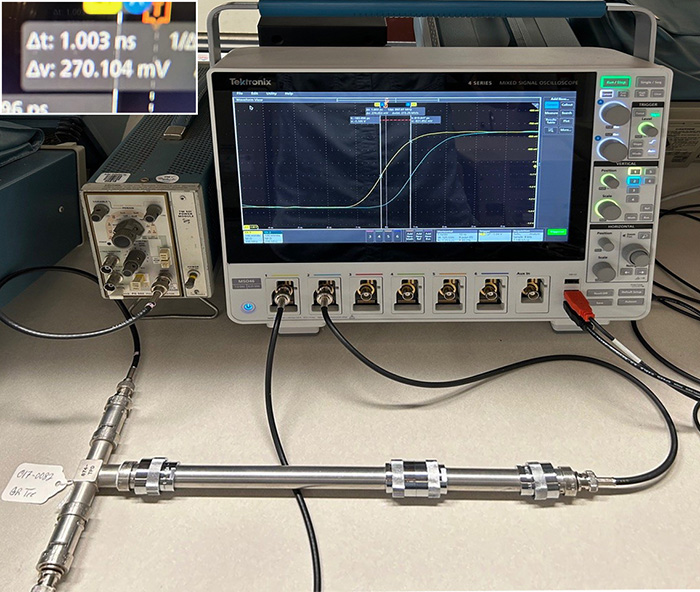This bench setup demonstrates how to use an oscilloscope to measure the speed of light, which is equivalent to the speed of an electrical pulse in a conductor in a vacuum.
A signal from the PG 502 pulse generator is split and routed to two paths identical in construction with one 30 cm longer than the other. This extra 30 cm is an “airline” and used because the dielectric properties of air are very close to those of a vacuum.
Channel 1 (yellow) displays the signal from the shorter path and channel 2 (cyan) displays the signal from the 30 cm longer path. The oscilloscope trigger point is set on the rising edge of Channel 1. The MSO46 oscilloscope measures the time difference between the cursors are set at the same vertical point on the rising edge of the pulse.
Δt: shown on the screen measures the time difference between the two signals which is the time to travel the additional 30 cm. The speed of light in a vacuum is defined as 29.98 cm per nS which equates to 1.0006 nS per 30 cm. Our bench setup is accurate to within 0.25%.

